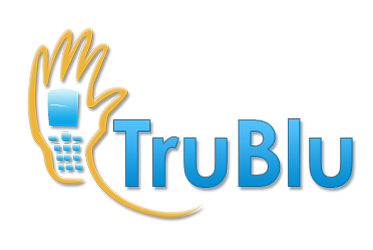Table of Contents
ToggleSEO Spyglass Review
To get more visitors to your website (and more sales), you need a superior backlink analyzer like SEO Spyglass, a comprehensive list analysis tool that is part of the SEO PowerSuite of tools. SEO Spyglass is highly recommended for SEO professionals and business owners who need the most accurate, up-to-date information about their websites. Especially if you are struggling to rank your website(s) or just don’t understand why you can never out-rank your competitor, you need to start analyzing the backlinks for some answers.
Please note: this is an unbiased review of SEO Spyglass, and the links contained herein are NON-affiliate links. I strongly believe in this product and recommend it without hesitation.
I have used SEO Spyglass daily for a couple years, and have also had the opportunity to use other link analysis tools such as Market Samurai, Google’s free Keywords Tool, SEOmoz, Scrapebox, Majestic SEO and others. This is my unbiased review of SEO Spyglass based on years of real-world experience, but I will try to conceal my excitement and provide enough information for you to make up your own mind.
SEO Spyglass Benefits
Why choose SEO Spyglass and not another of the hundreds of tools on the market?
Let’s take a step back for a moment and discuss why a link analysis tool is important to Search Engine Optimization and the greater purpose of “more customers and more sales.” Software like SEO Spyglass offers two real benefits for business owners: 1) assess the value of the links coming to your website, and 2) assess your competitors’ linkbuilding efforts to exploit weaknesses in their marketing campaigns. The bottom line benefit for any quality linkbuilding analysis is advancing your position in the search engines.
How is that possible? Google (and the others) rank sites based on criteria; the top ten websites on page one are not a random circumstance but rather, based on a complicated (and proprietary to Google) ranking formula called an algorithm. While Google keeps their formula secret like Coca-Cola, search engine professionals have “backwards-engineered” it to some extent and have made educated guesses about the most important factors Google calculates when ranking sites in their index. One of the biggest of these is the quality and volume of backlinks coming to your site. Quality of the backlinks is most important, volume is secondary. In addition, the types of links vary based on the keyword; in one niche, links from video sharing sites may be more important than another niche where links from blogs would factor more heavily. A site that has links from .EDU or .GOV sources will be rewarded over a competitor that does not.
In addition to the quality of links, the anchor text of the link is also key. Anchor text is simply the text that you click on in a link. For example, in this example, “SEO consultant” is the anchor text: SEO consultant. If you have an auto repair business and you receive a link to your site where the anchor text is “chocolate donuts,” it’s not going to count as much as the anchor text “best mechanic”. In addition, if you receive a link to your site with the anchor text “auto repair rip-off” that may count negatively. Links from high-ranking websites have more weight than lower ranking websites. Links are essentially votes, but they are weighted votes based on the authority of the page ranking to you and the keyword in the anchor text matching the content of your page (matching specific data on your page, to be precise).
If you’ve ever wondered about a competitor out-ranking you, “How do they DO that?” …then a link analysis tool is your answer. Not all link analysis tools are equal, however, as we’ll discuss in a moment.
Conventional wisdom says it is good to be #1 in Google, or at least on the first page of Google. And when we say “Google” we’re also implying Bing, Yahoo, MSN and the hundreds of other minor search engines. There have been a couple of noteworthy benchmark studies including the famous AOL study that concluded why it is good to be on page one of search engines. The numbers slightly differ amongst the studies, but the consensus is that approximately 98% of search traffic ends on page one, and half of that 98% is in the top 3 positions. Said another way, only two percent of your customers ever bother to go to page 2 to find you! And half of your customers ever bother to go beyond position #3 on page 1 to find you!
Let’s discuss this in real-world terms for a moment. Imagine if you were a shop owner and you decided to close your doors during the busiest days and times of the week, or only let in two out of every hundred customers who arrived at your shop. Or an attorney who tries to sustain a practice with two clients, or a bricklayer who builds a wall with two bricks. Pretty near impossible… same with an online business. You just can’t be in business with two customers out of 100.
The other unspoken truth in SEO is the volume of searchers in your niche. Some niches are small and have less than 100 searchers per month looking for their product or service; I particularly see this in geo-specific searches for certain services or business categories. If you are the local business owner and your search engine potential is only 100 people per month, you can’t afford to be on page two for that search term. If only two people click through to your site, do you think both of them will pick up the phone to become your customer? It doesn’t work that way in the real world; ten percent conversion is rare. Five percent is excellent. One to two percent is average. Conversion (website visitors opting in to become leads or buying something to become customers) is a whole other discussion that we’ll cover in another article.
For now, let’s agree that it’s important to be on page one of any search engine for our intended keywords. Ideally we need to be in multiple places on page one with at least one page ranking in the top 3 positions.
You may be feeling a bit chagrined at this point with the implication that it’s possible to manipulate or leverage your search rankings to guarantee a top placement in Google. It is possible to do, yes. There are legitimate ways to increase your search ranking, but unfortunately, there are also unscrupulous ways to “game” Google. The latter will spell disaster for your business; black hat techniques will get you banned from the search engines and are not the subject nor intent of this discussion. My recommendation is to consistently create valuable content that your audience will find interesting and informative (and perhaps even entertaining), and then find a way to optimize that content so the search engines can appreciate it for what it is. One example of “tricking” Google is keyword stuffing, a technique of repeating a keyword in an article to the point of being obnoxious. This technique is thankfully passe, but only after thousands of websites got “disappeared” from Google Corleone style. Don’t do that; as The Godfather would say, “It’s bad for business.”
SEO Spyglass – A Look Inside
SEO Spyglass empowers you to find weaknesses in your own linkbuilding campaigns and that of your competitors. The value in a link analyzer software like SEO Spyglass is the number of data sources it pulls from (the higher the better) and the age of the sources (more recent the better). After all, what good is a tool that only pulls from one source and serves you data that’s two weeks old? Inaccurate data in Search Engine Optimization is almost worse than no data at all.
In addition, you want a simple interface. There is nothing worse than analyzing 500 lines of a spreadsheet to find the one nugget that will make you more money. That is time consuming and costly. SEO Spyglass is an easy four-step process that begins with a simple either-or choice:
 What do you want SEO Spyglass to do for you? Research a keyword or analyze a competitor website?
What do you want SEO Spyglass to do for you? Research a keyword or analyze a competitor website?
I always check the box that says “show expert options” because it allows me to tailor the search for my needs. For example, if I’m selling a product to the Australian market, I can target only the search engines in Australia. SEO Spyglass also allows you to target Spanish-language Bing and sort by Country or Search Engine. The latter option allows a quick worldwide selection of all the Yahoo indexes, for example.
SEO Spyglass will analyze your competitors’ links for each search engine you select, plus it will allow you to find all incoming links from search engines for that particular keyword. You can toggle “All Search Engines” or narrow your search based on country and / or type of search engine — for example choosing only Google Mobile or Google blogs if that is your intent. SEO Spyglass provides a range of data that is fully customizable to provide the most accurate answer to your particular research. In the final step, you can choose to limit the search by number of backlinks per search engine, or to find all the backlinks that exist for that keyword. It will also allow you to exclude duplicates amongst search engines.
SEO Spyglass Data Analysis
SEO Spyglass processes the data very quickly (which will vary somewhat based on your internet connection), and presents the data in a couple different methods.
My personal favorite is the SEO Spyglass spreadsheet-style report that I can sort by Anchor Text, Domain Page Rank, Link Value, Backlink Page and more. You can also move the columns around so you have the most relevant information in a single glance. You’ll be able to see if a competitor has backlinks from the authority directories DMOZ or Yahoo! Directory, or if the links are from website home pages or internal pages.
Click the Analyze button to reveal a graphical chart of the keywords linking to your website. This is especially useful to make sure you’re getting links for the RIGHT keywords. In our example earlier about the auto repair shop, wouldn’t you hate to be the owner of that business to find that the most frequent keyword linking to your site is “roses” when it should be “engine repair”? With the information provided by SEO Spyglass, however, you would be able to create some links to your site with the proper keyword anchor text and then re-run the analysis to see the improvement.
SEO Spyglass also provides a report function that presents the findings in a discussion/recommendation format and parses it into seven main categories for easy assimilation:
- Optimize Keywords
- Increase Google PR
- Find Link Partners
- Submit Articles
- Find Traffic Sources
- Use Social Media
- Get Listed in Directories
There is also a “Final Words” section that serves to wrap up everything in a summary format. It’s (almost) like having a (legitimate) search engine professional analyzing your data and then sitting with you and giving their professional recommendations.
SEO Spyglass Pro vs. Enterprise Edition
 You also have the option to publish the data. If you are an SEO professional who is providing analysis data to clients, or a business professional who needs to share the data with members of your team, publishing reports will be particularly useful for you. The publish feature is found in the Enterprise edition of SEO Spyglass, not the Professional version. It’s a comprehensive report that SEO Spyglass calls your “SEO Success Blueprint Report” that lays out the key points to ranking a website based on real-life data and proven strategies endorsed by the major search engines. The publishing feature allows anyone to read the report without having to log in to the software; it presents a PDF that you can email or print.
You also have the option to publish the data. If you are an SEO professional who is providing analysis data to clients, or a business professional who needs to share the data with members of your team, publishing reports will be particularly useful for you. The publish feature is found in the Enterprise edition of SEO Spyglass, not the Professional version. It’s a comprehensive report that SEO Spyglass calls your “SEO Success Blueprint Report” that lays out the key points to ranking a website based on real-life data and proven strategies endorsed by the major search engines. The publishing feature allows anyone to read the report without having to log in to the software; it presents a PDF that you can email or print.
Of course, the reports can be branded with your company logo and are completely customizable to match your brand’s style and colors. You may choose which report sections to include, edit the introductory text in the report so it’s in “your words,” and more. Your report may be as brief or as detailed as you wish; SEO professionals might offer a free summary to prospective clients as a lead generation tool and then charge for delivering the fully detailed report later. Detailed links analysis reports by SEO Spyglass can fetch $2,000 or more.
SEO Spyglass Alternatives
I will provide an in-depth comparison between the various link analysis software in another discussion, but want to briefly touch on the key differences one finds in lesser and more costly alternatives to SEO Spyglass.
I have used a wide variety of link analysis tools including Market Samurai, Traffic Travis, Majestic SEO, Scrapebox, the SEOmoz toolset and others as I have been developing websites since 1999 in a wide variety of niches. In my experience, nothing provides the same level of analysis, customization and accuracy as SEO Spyglass. It truly is second to none.
Oftentimes a links analysis tool will be buried inside of another piece of software, so it’s merely a piece of the puzzle and not the main focus of the software. SEO Spyglass is a dedicated links analysis tool, and as such, it is more robust than most others out there.
The main problems I have found with links analysis tools come down to the accuracy of the information. Not only is that intensely irritating and stressful, but it can be deadly if you’re making business decisions based on bad data. Oftentimes a tool will pull from one data source, and then when that data source changes its API or temporarily hiccups, the tool stops working or reports aged or inaccurate data. Some tools grab data from free online sources which themselves are aggregators; it’s like a “psst…pass-it-on” method of data collection. Do you really want to base your business or livelihood on a “tommy said that sheila said that karen said” type of data collection? Yet there are SEO companies every day who not only provide that level of data collection but sell the information to unwitting business owners.
The other side of the coin is data analysis that’s accurate but costs a small fortune to implement. Yes you can spend $1,000 per month or more on analysis of search data… but at that price point, the ROI seems questionable unless you have a well established business, know your conversion metrics and traffic, and can convert the expense into actionable results. For most business owners, it’s overkill and frankly a level of information that is squandered on most end users. The best kind of data you can buy is something you can understand, take action on and convert into real profits; SEO Spyglass provides that in a very customizable format and level of detail so you get answers to your questions and don’t create more noise for yourself in an already noisy world of so-called “expert” opinion.
SEO Spyglass Conclusion
SEO Spyglass is an outstanding backlink checker in skilled hands, and it will definitely elevate your game in understanding the important factors to rank your website or client websites. I don’t like to use the “zero to hero” phrase too often, but SEO Spyglass really could take a complete newbie and make them into an expert; it will teach you how to rank well, and it will even teach you what keywords to target based on the top websites in your market.
Extremely powerful but easy to use, SEO Spyglass will answer the key questions to increase your profits:
- where to find the highest quality links to out-rank the competition
- what anchor text for best results
- how many links will it take to achieve objectives
For more information about SEO Spyglass Professional and Enterprise editions, please click the links below:
If you have any questions about search engine optimization for your business, please contact me today for a free consultation and analysis of your online business.
Join in the discussion below about SEO Spyglass.



